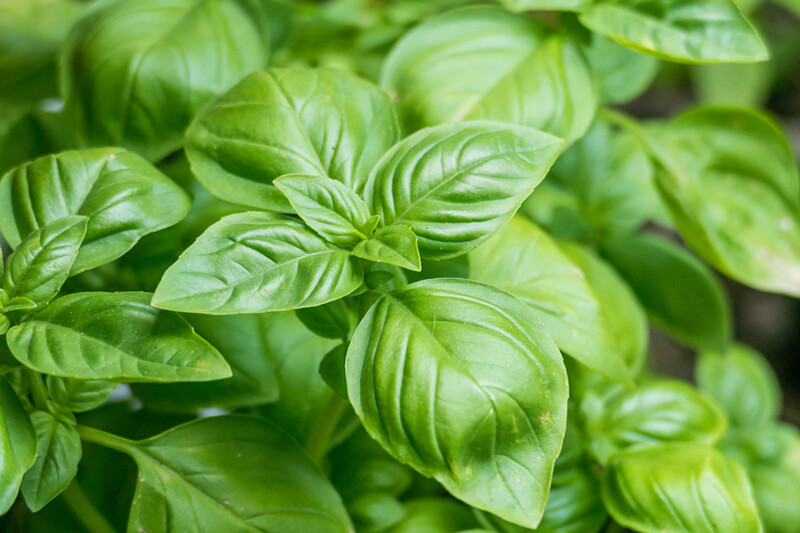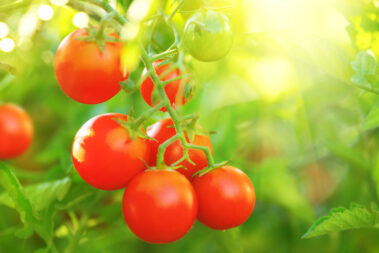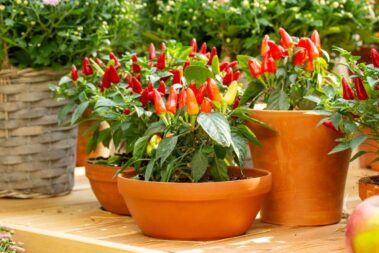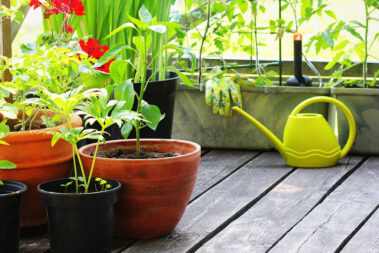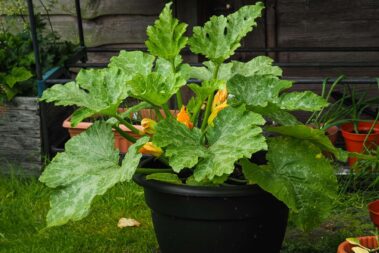Getting fresh herbs straight out of the garden is a sure-fire way to take your cooking to the next level, no matter how skilled you are (or aren’t) in the kitchen. But buying fresh herbs at the store is far less affordable than settling for the less-indulgent dried form.
Luckily, growing your own herbs at home, like basil, is simpler than you might think. And by growing this Italian staple in a container, you can easily keep it in reach on a sunny kitchen window sill or just outside the back door.
Table of Contents
6 Steps for Growing Bountiful Basil in Pots
Most herbs grow well in containers, but they all have their own special preferences and conditions that need to be met if you want a bountiful harvest.
Here are six tips to help you grow basil in pots that will keep producing all summer long (and year-round if you grow it indoors).
1. Pick the Right Container
Basil doesn’t need a ton of root space so long as the soil remains consistently moist. Small containers are perfect for putting on the window sill inside, while larger containers are great for outside since they will hold moisture longer.
Whichever pot you choose, make sure it drains easily and allows for plenty of space between plants. Small containers can only support a single plant. In larger pots, try to allow for at least six inches of space between plants to accommodate good airflow.
2. Buy the Right Soil
No matter the size of pot you go with, you’ll want to make sure you have a good quality potting soil that won’t pool or dry out too fast.
Basil likes constant moisture, but will struggle in soil that’s too wet or too dry. An organic vegetable potting soil (not standard garden soil) will work best in pots. And, since these products are already full of nutrients, you won’t have to worry about fertilizing much as your basil grows.
3. Find the Best Spot
Basil loves warmth and sun. Six hours of sun per day is the minimum recommended. A sunny spot on the patio during the late spring and into summer is perfect.
If you plan to keep your pot inside, make sure you place it in a sunny south-facing window. If you find your basil isn’t growing well or starts “reaching,” you may need to provide supplemental light with a special grow bulb, or by transporting your plant outside on warm days.
4. Germinate or Root
Basil is easy to grow from seed and even organic herb seeds tend to be cheap to purchase. Since you’re growing your basil in a pot anyway, it’s easiest to direct seed straight into the container. Always plant a few more than you think you’ll need and thin the seedlings once they’re about an inch tall. Basil seeds do require sunlight to germinate, so make sure to only cover them with about a quarter-inch of soil.
Basil can also be grown from cuttings, including those from fresh bunches you buy at the supermarket. Simply save the bottom three inches of stem from your basil bunch and stick it in some water. Once roots begin to develop, transplant into your pot and keep the soil extra moist for a few days. Learn more about other plants that can be propagated from kitchen scraps.
5. Keep it Moist
Frequent watering is important for basil, but don’t overdo it.
Outdoor plants will likely need to be watered daily, especially during the summer. As long as your pot drains easily, you shouldn’t have to worry too much about overwatering. Indoor plants should be watered in the sink and allowed to drain fully before being placed back in their dishes.
Unless your basil starts to lack vigor or lose some color, you shouldn’t need to worry about supplemental fertilization until you transport it inside at the end of the season.
6. Harvest Harvest Harvest!
The most abundant basil plants are those that are well-tended and pinched back frequently. Start by cutting off the top leaves once the plant has enough leaves to spare. This will encourage bushy growth rather than vertical.
Continue harvesting the ends of branches (a few inches at a time) as the plant matures.
When carefully harvested, dried and stored, a single basil plant can provide tasty leaves throughout the season. If you have a sunny enough window, you may even be able to continue your harvest well into the winter months.
Enjoy!
Basil leaves are a great topper for salads, a tasty addition to pasta, and a surprising but fun garnish for many summer drinks. But, if you find yourself with more basil than you know what to do with, try pulsing it down with some oil and freezing it for fresh-tasting pesto all winter long!
- How to Pick the Perfect Watermelon For a Sweet Summer Treat - April 10, 2024
- Future Kind’s Foundations: A Multivitamin Made for Vegans - December 5, 2023
- Does Nutritional Yeast Go Bad? - November 28, 2023

